Public service media are struggling to reach younger, less educated audiences and risk “decline and ultimately irrelevance”
The audience for public service news is old, educated, and politically diverse. As a result, public service media (PSM) in many countries fall far short of the ambition to provide a near-universal news service, especially online and risk becoming irrelevant to much of the public. PSMs often struggle to reach younger audiences and people with limited formal education. Most of these news brands are widely used and highly trusted, but they are often less trusted by people on the political right and by people with populist attitudes.
These are the main conclusions of a new report published by the Reuters Institute for the Study of Journalism with the support of Finnish public broadcasting company Yle. The report draws on survey data from the 2019 Digital News Report and covers eight European countries: Finland, Germany, United Kingdom, Czech Republic, Spain, Italy, France and Greece.
Here are a few findings of the report on five different topics.
On the audience that PSMs reach online and offline
PSMs struggle to engage with new audiences online. The vast majority of the people they reach online are already reached offline. Across the eight countries covered by the report, the BBC is the only PSM whose combined cross-platform news reach is 10 points higher than its offline reach. In most cases, the additional online reach is 5% or less.
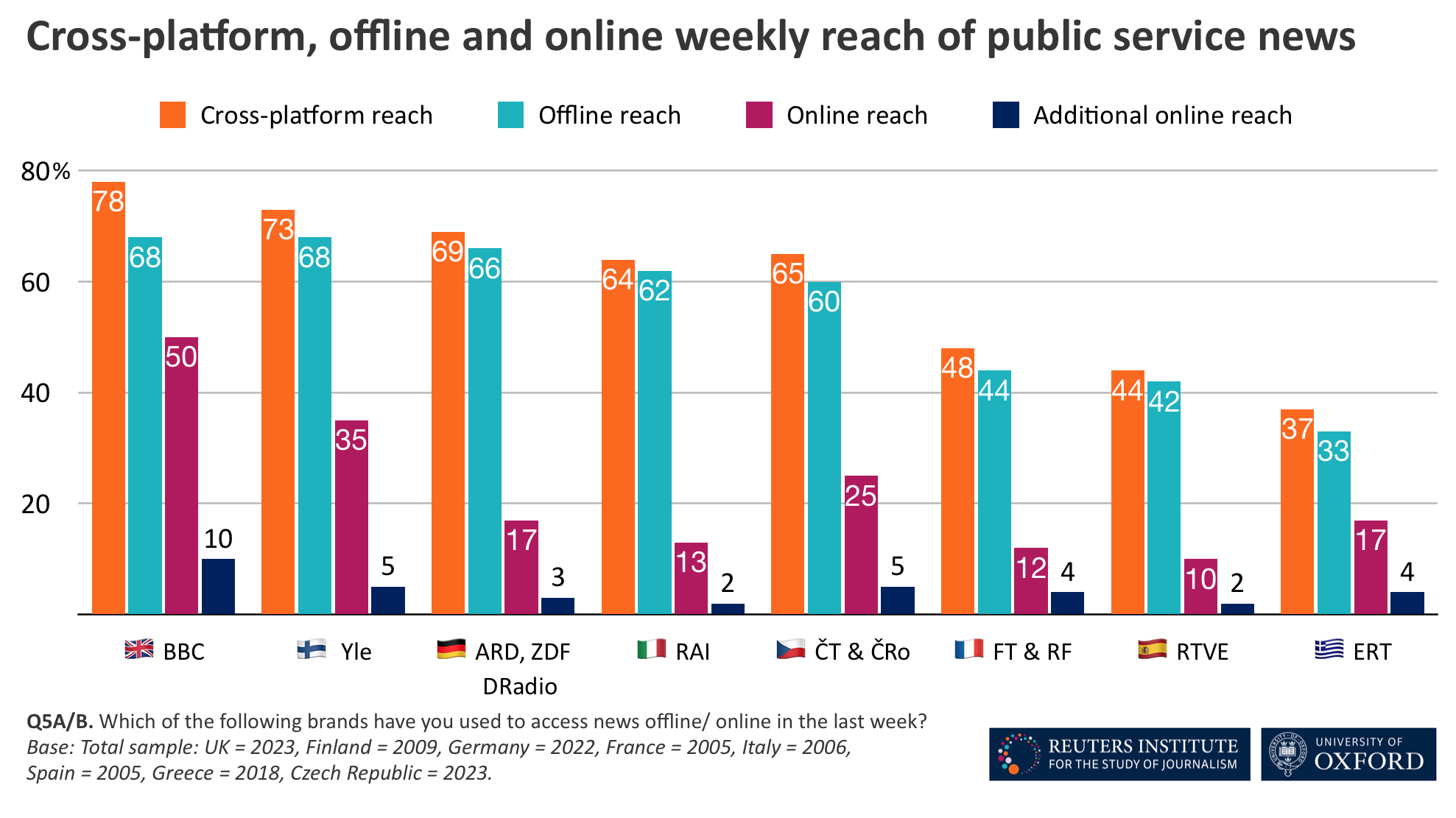
On PSMs reaching young people
The report compares how audiences between 18 and 25 use offline and online public service news with the use of their strongest private competitor online and with the use of YouTube and Facebook for news. The figures show that:
- US-based platforms like Facebook and YouTube are more widely used as sources of online news by young people than public service media in many European countries. Facebook is more widely named by young audiences as a source of online news than public service media in seven of the eight countries covered, and YouTube in six of eight countries covered.
- Despite broadcast public service news being much less widely used among younger audiences, offline still delivers wider reach than online in every case but the BBC.
- Despite younger audiences’ consistent preference for online news over offline sources, the BBC is alone in our sample in having significantly higher online reach among young audiences than in the wider public. In every other country covered, reach is lower or at best roughly the same.
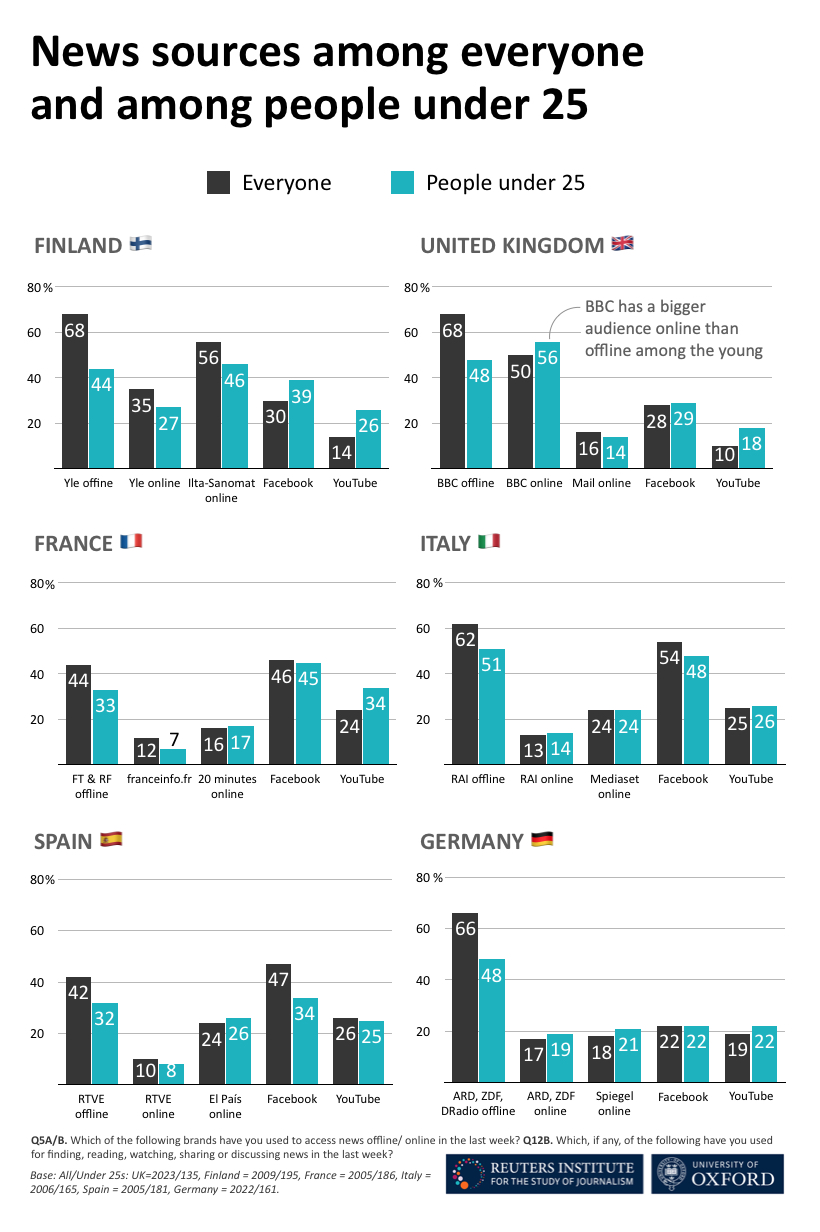
As this chart shows, weekly online news reach for people under 25 has declined in the last three years in most of the organisations covered by the report.
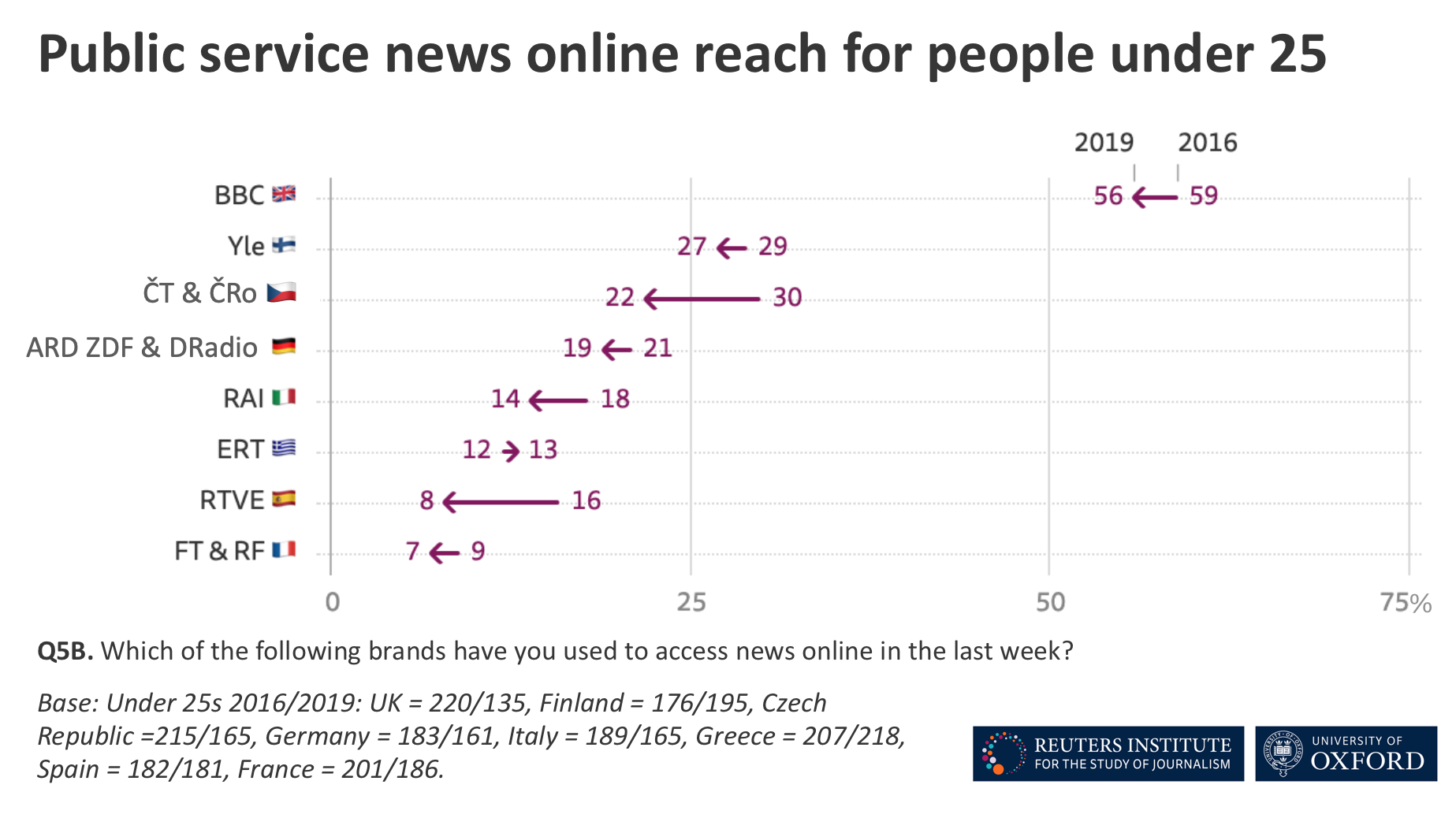
The report documents how heavily public service news audiences skew towards older people, with those over 55 accounting for about half of total weekly reach, ranging from 42% (Czech Republic) to 52% (Germany). PSMs rely heavily on offline news content to reach younger people, with half or more of the 18- to 24-year-old audience reached offline only in most countries.
On reaching people with less formal education
In every country covered by the report, public service news is less widely used by those with limited formal education. Given how news consumption is characterised by significant social inequality, this means there is a risk of public service news exacerbating rather than closing this gap. In Germany, only 13% of the least-educated group use the ARD and ZDF online services at least once a week compared with 17% overall. This number goes down to 11% for RAI in Italy, 9% for RTVE in Spain, and 8% for the joint PSMs’ online services in France.
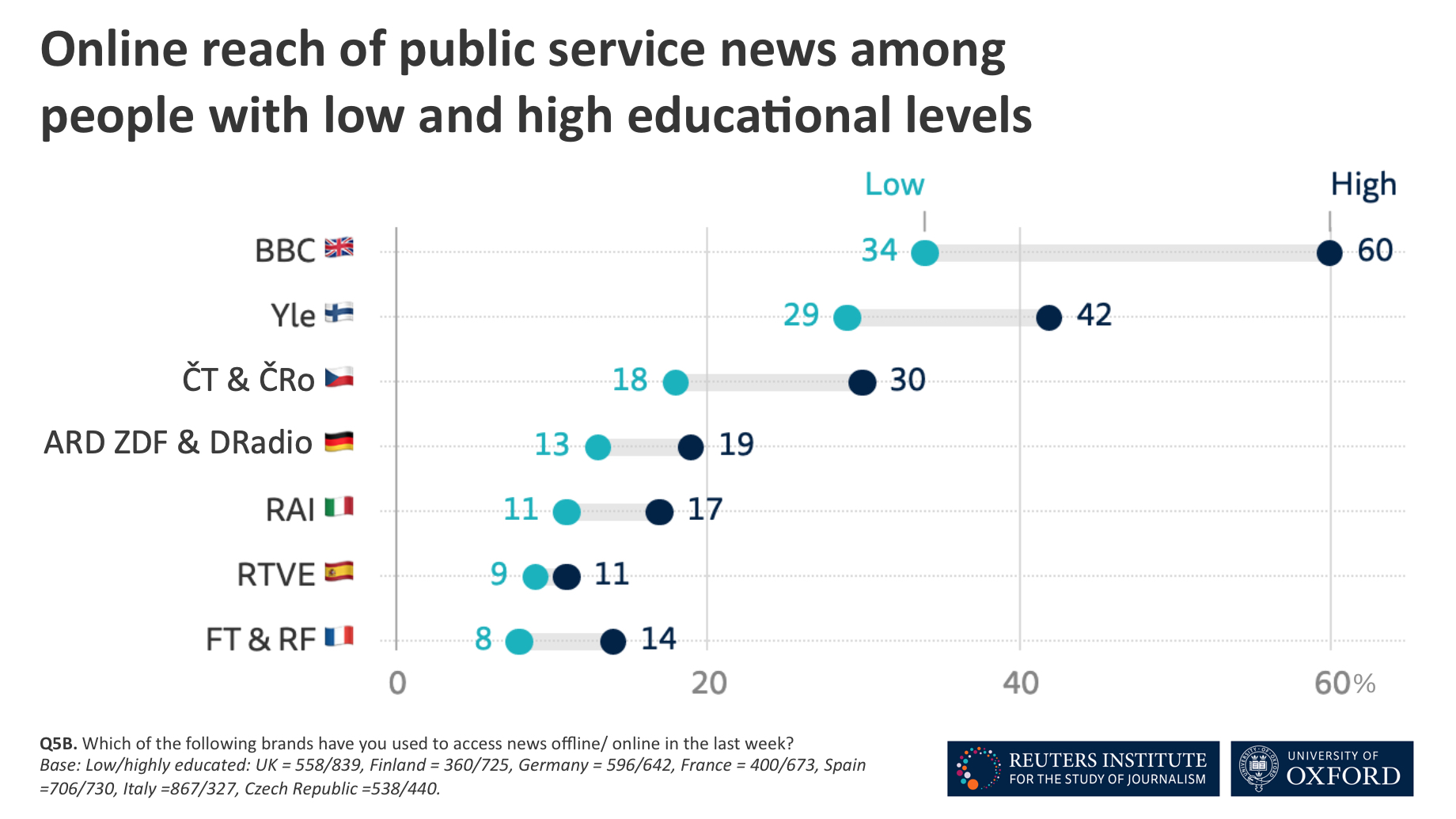
On reaching people with different ideologies
The report charts each PSM news provider and select private broadcasters in terms of the size of their cross-platform weekly news audience and how far its overall audience leans towards the left or right of the political spectrum, as compared with the population as a whole.
Figure 7 reflects this analysis. The further from the centre, the more politically polarised is a news provider’s audience. News providers in the centre tend to have audiences that appeal equally to those on the left and those on the right.
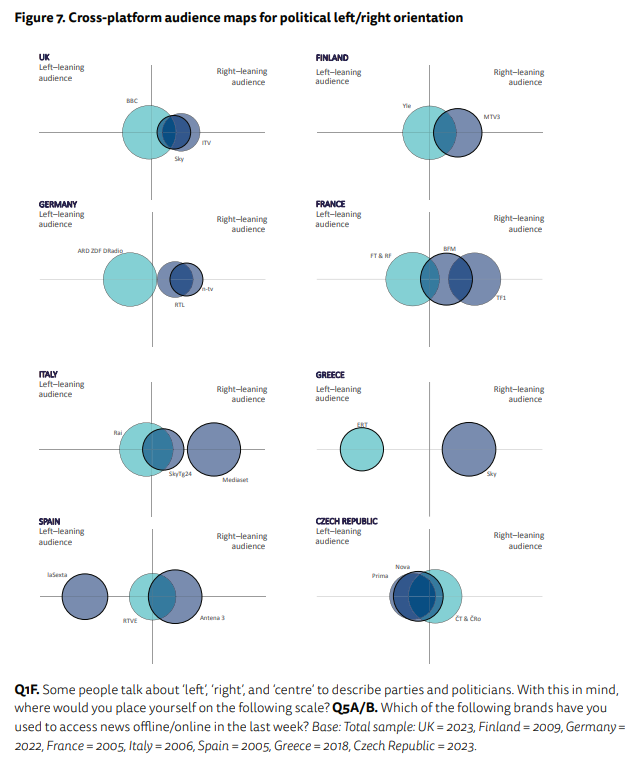
In most countries the audiences of the private competitors lean more strongly to the political right.
In five of the eight countries covered by the report, PSM news services are trusted more on average than their private competitors. Most of them reach people with diverse political views, although in some cases less so on the political right.
On reaching people with populist views
Most PSMs covered by the report reach people with and without populist attitudes to equal degrees. The only exception to this pattern is Greece, where public broadcaster ERT does not reach people with populist attitudes. Private broadcast competitors seem to be better at catering to populists. The only exception to this pattern is in Spain.
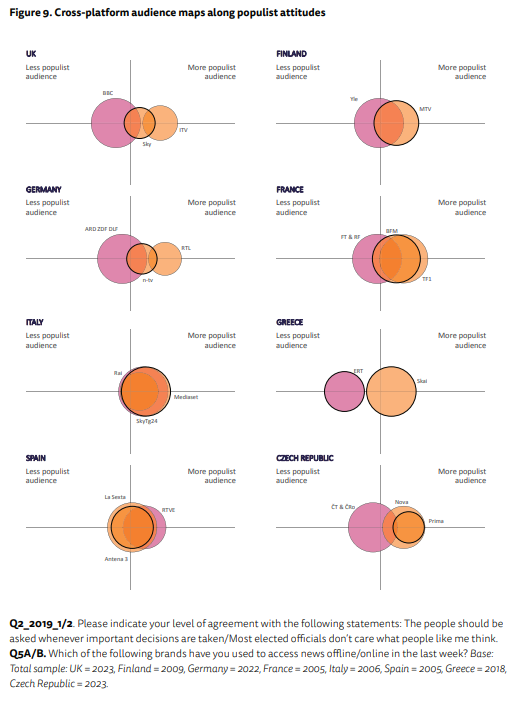
All but one PSM examined in this report are trusted significantly less by individuals who support populist ideas. The only exception is RAI, which is trusted equally by populist and non-populist citizens.
Anne Schulz, lead author of the report, said: “Our research shows that PSMs studied in the report are well trusted and often more trusted than their main private broadcast competitors. However, they seem to be facing problems with trust by populist audiences. Populist citizens have not stopped using these outlets but they trust them less. It will be important to keep an eye on this in the future.”
Dr. Schulz added: “If the online performance of these news brands does not improve, public service media risk continued decline and ultimately irrelevance to much of the public.”
Rasmus Kleis Nielsen, co-author of the report, said: “The challenges that face public service media are bigger – much bigger – than is commonly acknowledged. If they do not find more compelling and engaging ways of delivering online news, especially to younger people and people with limited formal education, they ultimately will not be able to deliver on their public service mission, or justify the public funding they receive.”



